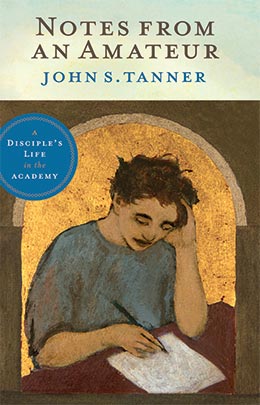Foreword
This book gathers together brief missives entitled “Notes from an Amateur” that I periodically sent to the faculty of Brigham Young University during my years as academic vice president (2004–11). I took the title from my inaugural preschool address to the faculty. As I explained in that talk:
The word amateur derives from the Latin for “love.” An amateur is at root a lover—a lover of sport, science, art, and so forth. . . . As faculty we are properly concerned about our professionalism. There is much to recommend the professional ethic, including rigor, methodology, high standards of review, and so forth. . . . Yet I hope that we also never cease to be amateurs in our professions—that is, passionate devotees of our disciplines. I have told some of you that I hope to be an academic academic vice president by still teaching, reading, and writing a little. Even more, I aspire to remain an avid amateur, still smitten with the love for learning that first drew me to the academy.
In this same talk, I also reminded the faculty of a quip by Professor Hugh Nibley that turns conventional assumptions about professionalism and amateurism on their head: “Anyone can become a . . . chancellor, or a custodian by appointment, . . . but since the world began, no one has ever become an artist, a scientist, or a scholar by appointment. The professional may be a dud, but to get any recognition, the amateur has to be good.”
The Notes were one way I tried to keep alive a spirit of amateurism, properly understood, in a university that was becoming increasingly professional, sometimes doggedly so. The essays were also a way to keep alive a love of learning in myself. Writing these Notes served as a welcome respite from writing bureaucratic memos. A bureaucrat is literally someone who governs from a desk; it comes from the French bureau (office desk) and the Greek kratia (power). I did not want to address the faculty solely from my office desk as a bureaucrat. I wanted to write to them from my book-lined study as an amateur.
And as a disciple, albeit a very imperfect one. These Notes regard life in the academy—its delights and dilemmas, its holidays and workdays—through the lens of my discipleship in The Church of Jesus Christ of Latter-day Saints. I cannot avoid this point of view, nor would I want to. For however imperfectly I may live up to the demands of discipleship, they envelop not only the academic disciplines for me but every dimension of my life.
Although these essays were originally addressed to faculty at BYU, they were also intended to have general and enduring interest. From the responses I’ve received to them, I trust that they may be of interest to a broader audience.
I am deeply grateful to Linda A. Reynolds for encouraging and designing this book. She understands that books are meant not only to be read but to be held, both in the hand and in the eye. A handsome book participates in the benediction God pronounces upon his creations: it serves “both to please the eye and to gladden the heart” (D&C 59:18).
I express similar gratitude to Brian Kershisnik for allowing us to use his imaginative and evocative paintings to illustrate this book.
And to Robert L. Millet, publications director of the Religious Studies Center at BYU, for soliciting, editing, and publishing this book—as well as for friendship that stretches back to the time before we both came to BYU as faculty. Thanks also to staff members R. Devan Jensen, Brent R. Nordgren, Joany O. Pinegar and their capable student assistants Annalise Belnap, Heidi Bishop, Jacob F. Frandsen, Matt Larsen, Art Morrill, Jonathon R. Owen, Nyssa Silvester, and Jeff Wade.
I have often reminded faculty and students that true education, as Yeats said, is “not filling a bucket but lighting a fire.” I hope these essays spark some flames.
John S. Tanner
